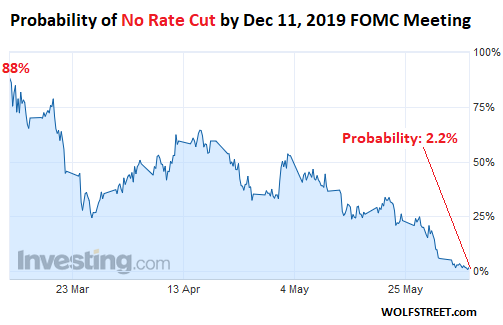Contents
Secondly, foreign investors could exit the Chinese market if they expect the yuan to depreciate more. In such a case, they may look towards India as an investment destination. However, soon after the announcement of devaluation of Yuan, FEX markets across the world started readjusting the prices of currencies which are linked to floating exchange rates. Indian Rupee two depreciated by about 3% immediately. Although there was no direct devaluation by Indian Government, but INR depreciated due to market forces which have changed after the announcement of devaluation of Yuan by China. Overvaluation is a circumstance where the price at which a currency is being exchanged surpasses what the open market will bear.

This is supposed to discourage imports – and to encourage exports and, in turn, to reduce trade deficits. A devaluation means that more local currency is needed to purchase imports and exporters get more local currency when they convert the export proceeds . Remember that we were following a fixed rate system till 1975. We had partial controls on currency market till 1993 when as per IMF standards we liberalized our entire economy. If the government or RBI fix the exchange rate of a currency , such a system is called the Fixed Rate system.
BROWSE STOCK COMPANIES
Under a floating exchange rate system, market forces generate changes in the value of the currency, known as currency depreciation or appreciation. It will make Chinese exports competitive in the global arena. It is expected that central banks of other countries might also resort to devaluation in order to boost their country’s exports. A drop in home currency exchange rate makes it more expensive for local people to buy goods from other countries, as import of such goods becomes costlier after depreciation / devaluation. Thus, they will either buy more goods manufactured by domestic companies or reduce their consumption of goods from abroad. Exports rise and imports fall, favoring a balance of payments that is more favorable to the decreasing trade imbalances.
This is also known as the reduction of the reduction value in currency, in other terms. The Chinese Foreign Ministry also said that threats and intimidation on trade would never work on China, after U.S. President Donald Trump said he was ready irr rule of thumb to impose tariffs on all $500 billion of goods imported from the country. The Monetary Authority can lower interest rates after deciding to create inflation since it is no longer necessary to “prop up” the economy with high interest.
- The decision was made due to the change in basic aspects of Ukraine’s currency during the conflict, as well as the rise of the US dollar versus other currencies.
- We had partial controls on currency market till 1993 when as per IMF standards we liberalized our entire economy.
- Devaluation lowers the cost of the nation’s exports as a result.
- As a result, it may also result in higher GDP and inflation.
- In PNG, the road systems are woefully underdeveloped.
- A trusted mentor and pioneer in online training, Alex’s guidance, strategies, study-materials, and mock-exams have helped many aspirants to become IAS, IPS, and IFS officers.
China is India’s biggest trading partner and thus a crash in their financial markets might make India a victim of domino effect thus affecting Indian stock markets. Slowdown in China has hit global commodity markets as well due to a decline in Chinese demand. Petroleum products and jewellery account for roughly 30% of India’s exports.
both cases, the value of the currency actually drops vs other currencies of the
In this paper, an attempt is made to review the probable reasons for the devaluation of the rupee and analyses the impact of currency devaluation on the various sector of the country. For this required data is collected from various Journals and websites. Pros and cons of currency devaluation are studied as boon and bane for the economic growth. In simple terms, currency depreciation refers to the fall in the worth of one unit of the currency against the value of one unit of a benchmark foreign currency.

Under such systems, the change price is pegged to a reference or pivot of a few kinds, typically made of currency, a basket of currencies or a commodity, like gold, for example. Contrary to forex devaluation, depreciation isn’t always intentional. Instead, depreciation refers to a decline in a currency’s value because of unfavourable monetary developments that could typically be reflected by monitoring monetary indicators. Its consequences are pretty virtually after the management of the State or monetary authority concerned. Many consumers would feel worse off as a result of a devaluation.
A trusted mentor and pioneer in online training, Alex’s guidance, strategies, study-materials, and mock-exams have helped many aspirants to become IAS, IPS, and IFS officers. They can now sell more apples , trade volume will increase. So importing from India has become really cheaper for America and they will use this case to their maximum advantage. Well, that was an explanation with respect to the local currency angle.
Geography Notes
Improvement in the trade balance, and commensurate increase in forex reserves, is also based on Nakatani’s analysis. One may well wonder how monetary policy and tinkering with the exchange rate is going to produce all these wonderful changes. In a floating rate exchange system, the value of a currency constantly changes based on supply and demand in the forex market. This change allows traders and firms to increase or decrease their holdings and profit over them. Revaluation is when the price of the currency is increased within a fixed exchange rate system.

Due to the decrease in imports and increase in exports, it is done to improve the balance of payments situation. The yuan declined for a sixth consecutive month in August, capping the longest losing streak since the height of the US-led trade war in October 2018. It will fall even more and cross the psychological mark of 7 per dollar this year, money managers including Societe Generale SA, Nomura Holdings Inc. and Credit Agricole CIB say. On the other side, devaluation is an economical coverage device intentionally utilised in constant or semi-constant change price systems.
For this research paper, the data has been used of secondary nature. It is collected from various Journals, RBI websites, bulletins, books and newspapers etc. You can give your feedback / comments about this Article.
There is certainly a critical need for a more sanguine understanding of this issue. The exchange rate of PNG is a result of a complex set of “unusual” arrangements between the central bank and the financial sector and is not the result of direct price fixing as assumed by many economists. Hence to understand the nature of the problem it is important to understand the political and economic drivers behind these arrangements and how and why the came into being in the first place.
Airtel, Bajaj, Hero may be hit hard by dollar supply slump in Africa
RBI can devalue rupee by selling it to purchase dollars in the forex market. Recently, China devalued its currency and there was so much hue and cry across the world markets. Let us try to understand these complex processes, and the implications of Chinese move. Sudden currency decline, particularly in developing economies, always raises fears, in which most of these currencies become plagued by similar investor concerns. The consequence of the 2016 Brexit on the value of the British Pound, which suffered substantial volatility and declined fast against the US Dollar is one real-life example of currency depreciation.
It should not be forgotten that the exchange rate of a currency is not really an indicator of the economic strength of a country. The key elements to help appreciate the Kina value is trapped in the production sector. Government need to allow more foreign investment and set up more factories of the goods to begin with the most frequently imported products. Usually, a weakening of the rupee causes great worries.
Transactions costs are part of normal business operations when converting gold into US Dollars. It will improve the trade balance by an amount exceeding USD250 million per annum, increasing forex inflows by the same amount. Currency depreciation in one country can spread to other countries. Clients are hereby cautioned not to rely on unsolicited stock tips / investment advice circulated through bulk SMS, websites and social media platforms. Kindly exercise appropriate due diligence before dealing in the securities market.
IAS4Sure WikiIAS notes covers all newspapers, PIB, government reports etc. and provides you crisp notes in simple language. Decreased investment and hence a slump in stock market. China also acts as an exporter of some crucial raw material for India. This will provide a boost to Manufacturing sector and a growth in capital goods. This move has led to increase in demand for dollar, and hence weakening of currencies like Euro, Yen and Rupee against Dollar.
Oil and gold prices have fallen, and India which is am importer of oil and gold can seek some relief through lower oil and gold prices which will help the current account deficit. The sharp fall in the Indian rupee has already rattled stock markets and if it continues to fall, imports will becoming further more expensive, adding to inflation. Curbing imports of non-essential goods will lessen the demand for Dollars and promoting export will help in increasing the flow of Dollars into the country, thus, helps in control rupee depreciation. After the devaluation of currency the inflow of foreign direct investment is increased. As we seen in table after the devaluation of rupee in 1991 the inflow of FDI is increased from 409 crores to 64,193 crores.
For them earlier with 1$, they used to get only 1 apple. Now after falling in Indian rupee, they get 2 apples. I will answer your other 2 points in regard to foreign held debt and inflation later.
Additionally, a slowdown in China which is one of the top five countries itself for Indian exports is not good news. In the light of recent devaluation of its currency by China, doyou think India should also devalue its currency? This move has led to increase in demand for dollar, and hence weakening of currencies like Euro,Yen and Ruppee against https://1investing.in/ Dollar. If a government decides to make its currency less valuable, the change is called devaluation. The currency’s issuing government made the decision to devalue all currencies. This can be critical for populations that depend on imports or when fundamental commodities in developing nations must be imported for the local market.
Briefly, the estimates for the calculation of increases in agriculture income are in section 11.6 and are based on estimates for agricultural export supply elasticities from Nakatani 2017. These estimates are based on recent data and so incorporate the current state of agriculture in PNG, and do not ignore the post-Independence decline in agriculture, as David claims. Just the depreciation alone, without any supply response, confers a significant increase in income for this group.
